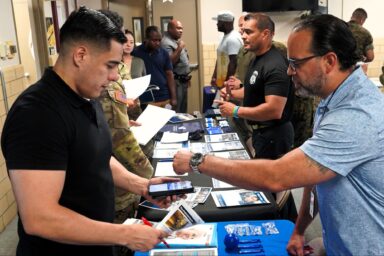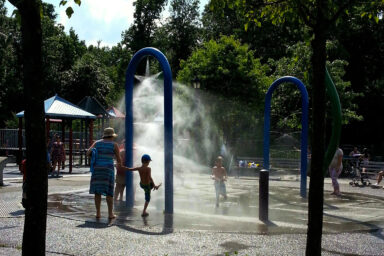PICKS are stories from many sources, selected by our editors or recommended by our readers because they are important, surprising, troubling, enlightening, inspiring, or amusing. They appear on our site and in our daily newsletter. Please send suggested articles, videos, podcasts, etc. to picks@whowhatwhy.org.
Earth Given 50-50 Chance of Hitting Key Warming Mark by 2026 (Maria)
The author writes, “The world is creeping closer to the warming threshold international agreements are trying to prevent, with nearly a 50-50 chance that Earth will temporarily hit that temperature mark within the next five years, teams of meteorologists across the globe predicted. With human-made climate change continuing, there’s a 48% chance that the globe will reach a yearly average of 1.5 degrees Celsius (2.7 degrees Fahrenheit) above pre-industrial levels of the late 1800s at least once between now and 2026, a bright red signal in climate change negotiations and science, a team of 11 different forecast centers predicted for the World Meteorological Organization late Monday.”
How a Digital Abortion Footprint Could Lead to Criminal Charges — And What Congress Can Do About It (Sean)
From Time: “Getting away with breaking the law in the digital age is tricky. Almost everything one does — whether it’s making a Google search for ‘how to clean up a crime scene,’ purchasing suspicious items on Amazon, or merely having been in the proximity of a crime scene with a cell phone that had its location services turned on — can be discovered via court-issued warrant and lead to charges and convictions. If Roe v. Wade is overturned — as a draft of a Supreme Court opinion signaled it might be — soon having or helping procure an abortion could become a crime in some states. And that means individuals’ personal internet data could be collected and used against them if they seek or facilitate a pregnancy termination.”
The Two-Word Question That Could Decisively Shape Abortion Politics (Dana)
The author writes, “As Roe v. Wade comes to an end, the next phase of the abortion war is underway. … State-by-state battles over abortion might go one way or the other, depending on tactics. But the war to shape majority opinion on this issue, if not to set national policy, will likely be decided at the strategic level, by a struggle to define what the debate is about. Is the debate about the decision itself — whether to end a pregnancy? Or is it about who makes that decision? Those two perspectives have squared off before. In 1989, when the Supreme Court began to roll back Roe, pro-choice strategists framed the issue with a catchy question: ‘Who decides?’ That question dominated the debate for years, and it likely will do so again, thanks to a paradox of public opinion: Most Americans don’t like abortion, but they also don’t like the government telling them what to do.”
Trump Kept Asking if China Was Shooting Us With a ‘Hurricane Gun’ (Sean)
The authors write, “Near the beginning of Donald Trump’s time in office, the then-president had a pressing question for his national-security aides and administration officials: Does China have the secret technology — a weapon, even — to create large, man-made hurricanes and then launch them at the United States? And if so, would this constitute an act of war by a foreign power, and could the U.S. retaliate militarily? Then-President Trump repeatedly asked about this, according to two former senior administration officials and a third person briefed on the matter. ‘It was almost too stupid for words,’ said a former Trump official intimately familiar with the then-sitting president’s inquiry. ‘I did not get the sense he was joking at all.’”
Finland Is on the Brink of a Nuclear Power ‘Game Changer’ (Laura)
From HuffPost: “From the outside, it looks like any other modern Nordic building rising several stories from a cleared swath of pine forest on this quiet, rural island off this country’s verdant southwest coast. But inside, hard-hatted workers are busy completing a feat of engineering that has never existed. It involves a robotic system and a basement network of switchbacking tunnels carved more than 1,300 feet into the Earth’s crust. Once finished, the project, called Onkalo, will turn the page to a new chapter of nuclear energy’s turbulent 80-year story and make history for the power plant just a two-minute drive down the road.”
Spotlight Antarctica: How Residents Eat Fresh in the Most Barren Spot on Earth (Reader Steve)
From Feast and Field: “Just in time for this issue celebrating Earth Day, one of our favorite Feast and Field photographers, Lèzanne Fourie, has headed to the most remote place on Earth, Antarctica, to spend a year working, learning and (of course!) taking photos of this mysterious place. We reached out to Fourie to get the scoop on why she decided to spend one year in a desolate part of the world where the average temperature is -56 °F, and fresh food is delivered from New Zealand only during the summer months. (Yes, they eat canned, dehydrated or frozen food the rest of the year, which is stored in a warehouse.)”
Scotland’s ‘Bodies in the Bog’ Traveled Hundreds of Miles to Die in a Toilet (Mili)
The author writes, “Researchers have uncovered new details about the lives and violent deaths of the ‘bodies in the bog’ — a group of medieval skeletons discovered in 1975 in a former Roman-era latrine in Cramond, Scotland. (In the UK, ‘bog’ is also slang for a toilet.) The buried individuals, who received stunning digital facial reconstructions based on their skeletons in prior research, include nine adults and five infants who lived in Scotland in the sixth century. Now, a new analysis of the isotopes (different versions of elements) in the bones and teeth of the skeletons reveals that several members of the group traveled from far-flung corners of Scotland before arriving at their ultimate burial site in the ancient toilets of Cramond.”



